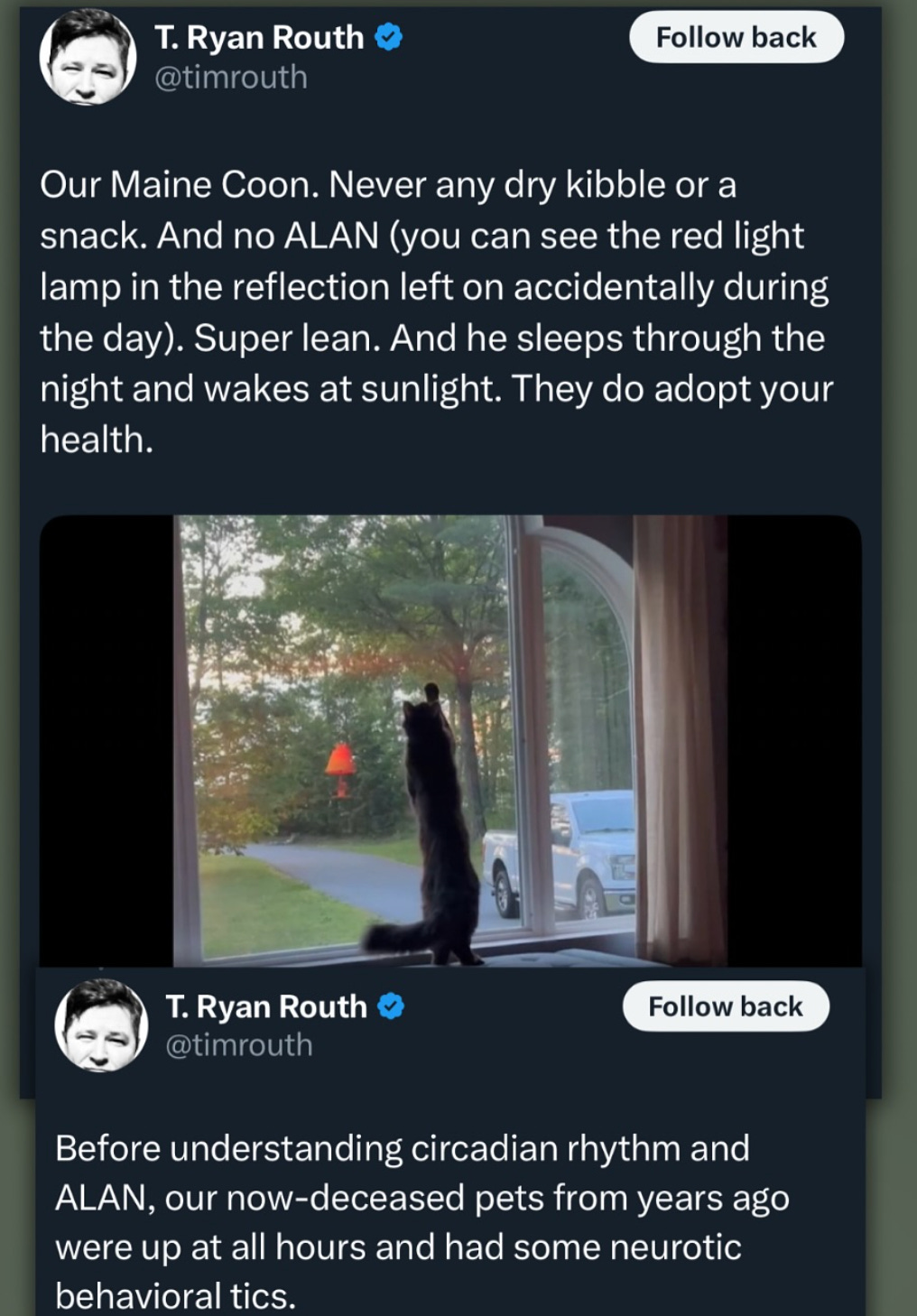Understanding Your Pet's Natural Circadian Rhythms
The concept of applying sunscreen to pets represents a fundamental misunderstanding of animal biology and natural behavior. While this idea might seem caring on the surface, it reveals how disconnected we've become from understanding the innate wisdom that animals possess regarding their relationship with sunlight and natural rhythms.
Animals possess an inherent understanding of their circadian needs. Watch any cat or dog, and you'll observe them naturally seeking sunlight when beneficial and retreating to shade when they've absorbed enough. This isn't random behavior—it's sophisticated biological programming at work.
The Circadian Nature of Our Companion Animals
Both cats and dogs operate on circadian rhythms similar to humans, with their biology intricately connected to the 24-hour cycle of light and darkness. These rhythms influence everything from hormone production to cellular repair processes, making light exposure a crucial component of their health rather than something to be blocked.
Dogs: Diurnal Companions
Dogs are naturally diurnal creatures, designed to be active during daylight hours and rest at night. Morning sunlight triggers cortisol release, promoting alertness and readiness for activity. Midday represents optimal time for exercise, training, and social interaction. When dogs seek out sunny spots, they're not just seeking warmth—they're facilitating nitric oxide release, stimulating mitochondrial function, and supporting melatonin precursor signaling.
The disruption of these natural patterns through modern lifestyle choices creates significant health consequences. Keeping dogs indoors under artificial lighting, skipping morning walks, exposing them to blue light at night, and feeding at irregular hours all contribute to circadian disruption that mirrors the health problems we see in humans.
Cats: Crepuscular Hunters
Cats follow a crepuscular pattern, with peak activity at dawn and dusk—times when their natural prey would be most active. This programming drives their energy cycles, with natural rest periods during intense midday sun. Like dogs, cats instinctively regulate their light exposure, gaining mitochondrial benefits from red and infrared wavelengths while using thermoregulation to maintain optimal body temperature.
Modern indoor living disrupts these natural patterns through constant food availability, artificial lighting at night, lack of natural hunting behaviors, and disturbances during natural rest periods. These disruptions manifest in health problems that parallel those seen in their human companions.
Shared Biological Foundations
The biological similarities between humans and their pets extend far beyond surface observations. Both species rely on:
- Melatonin production: Secreted during darkness to regulate sleep cycles, immune function, and antioxidant defense
- Cortisol rhythms: Rising with light exposure to promote alertness and physical readiness
- Metabolic timing: Feeding patterns that affect insulin sensitivity and digestive enzyme production
- Temperature regulation: Daily fluctuations that peak during active periods
- Repair processes: Cellular maintenance and detoxification that intensify during sleep
The consequences of circadian disruption are severe: Obesity, cardiovascular disease, joint problems, behavioral issues including aggression and anxiety, cancer, autoimmune conditions, chronic inflammation, and premature aging all result from violating these fundamental biological rhythms.
The Modern Pet Health Crisis

Current statistics reveal alarming rates of chronic disease in companion animals that mirror the health crisis in human populations. This parallel isn't coincidental—it reflects the same underlying causes affecting both species.
The conventional approach focuses on symptom management rather than addressing root causes. This pharmaceutical-centric model ignores the fundamental role of circadian biology in maintaining health, instead treating diseases that could often be prevented through proper attention to natural rhythms.
Your Pet as a Mirror
The health status of companion animals often reflects the lifestyle and environment of their owners. This connection extends beyond emotional bonds to encompass shared environmental factors and daily routines that either support or disrupt natural biological processes.
Many chronic conditions in pets stem from the same modern lifestyle factors affecting humans: processed diets, limited natural light exposure, disrupted sleep patterns, and disconnection from natural rhythms. These "diseases of captivity" represent the default outcome of modern living rather than natural aging processes.
Contemporary pets aren't typically dying of old age—they're succumbing to preventable conditions that result from lifestyle factors that can be modified through understanding and respecting circadian principles.
Implementing Circadian Health for Pets
Supporting your pet's natural circadian rhythms involves the same fundamental principles that promote human health:
- Morning light exposure: Early walks or outdoor time to establish circadian anchoring
- Regular feeding schedules: Consistent meal timing to support metabolic rhythms
- Natural light patterns: Minimizing artificial light exposure in evening hours
- Quality nutrition: Species-appropriate diets free from processed ingredients
- Adequate darkness: Ensuring proper sleep environments for restorative processes
The beauty of this approach lies in its simplicity and universality. The same principles that restore human health can be applied to companion animals, creating a harmonious household where all members thrive according to their natural biological design.
Trusting Natural Wisdom
Rather than imposing artificial interventions like sunscreen on animals that have evolved sophisticated mechanisms for managing their relationship with sunlight, we should observe and learn from their innate wisdom. By supporting rather than disrupting their natural rhythms, we can help our companion animals achieve the vibrant health that comes from living in alignment with their biological design.
